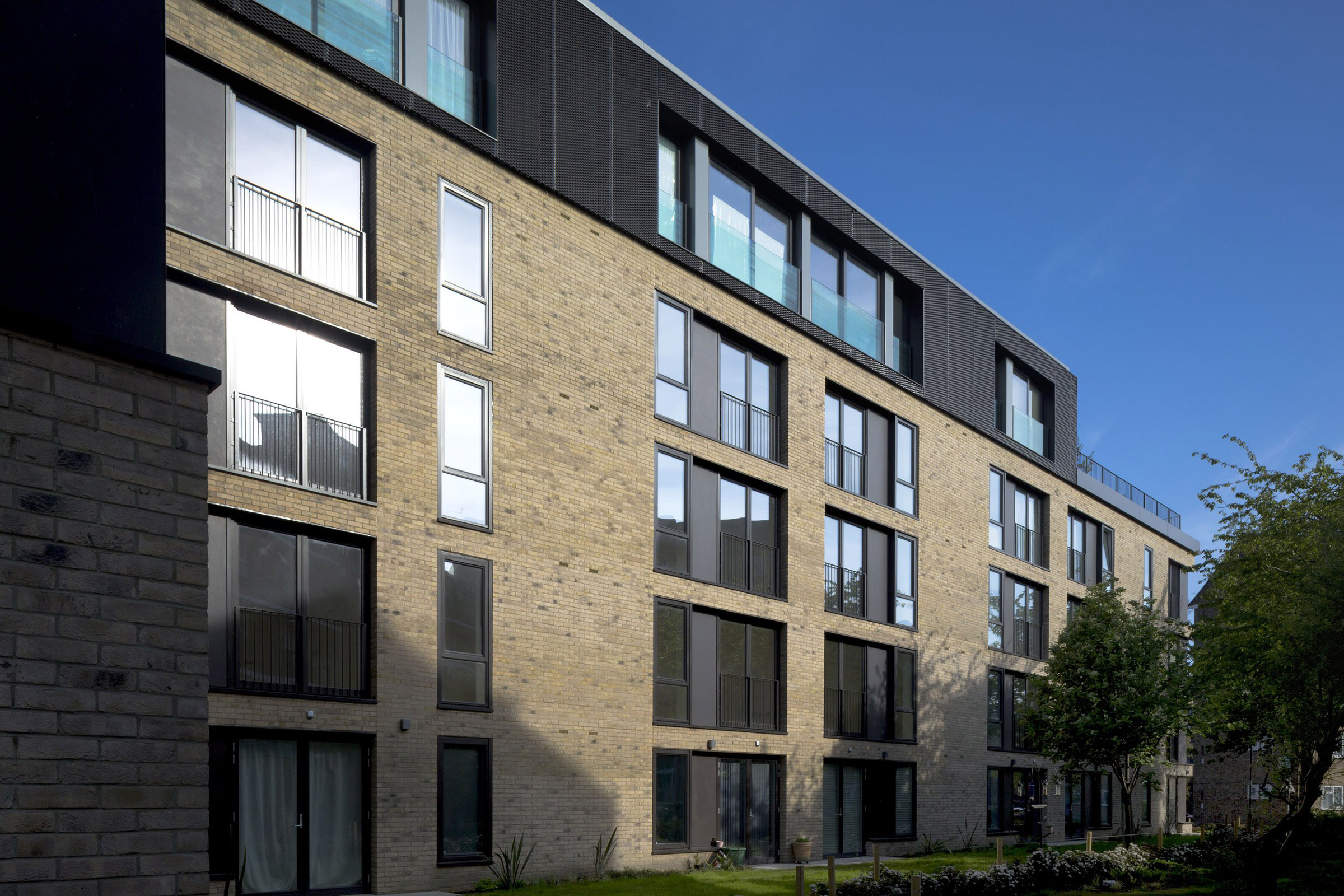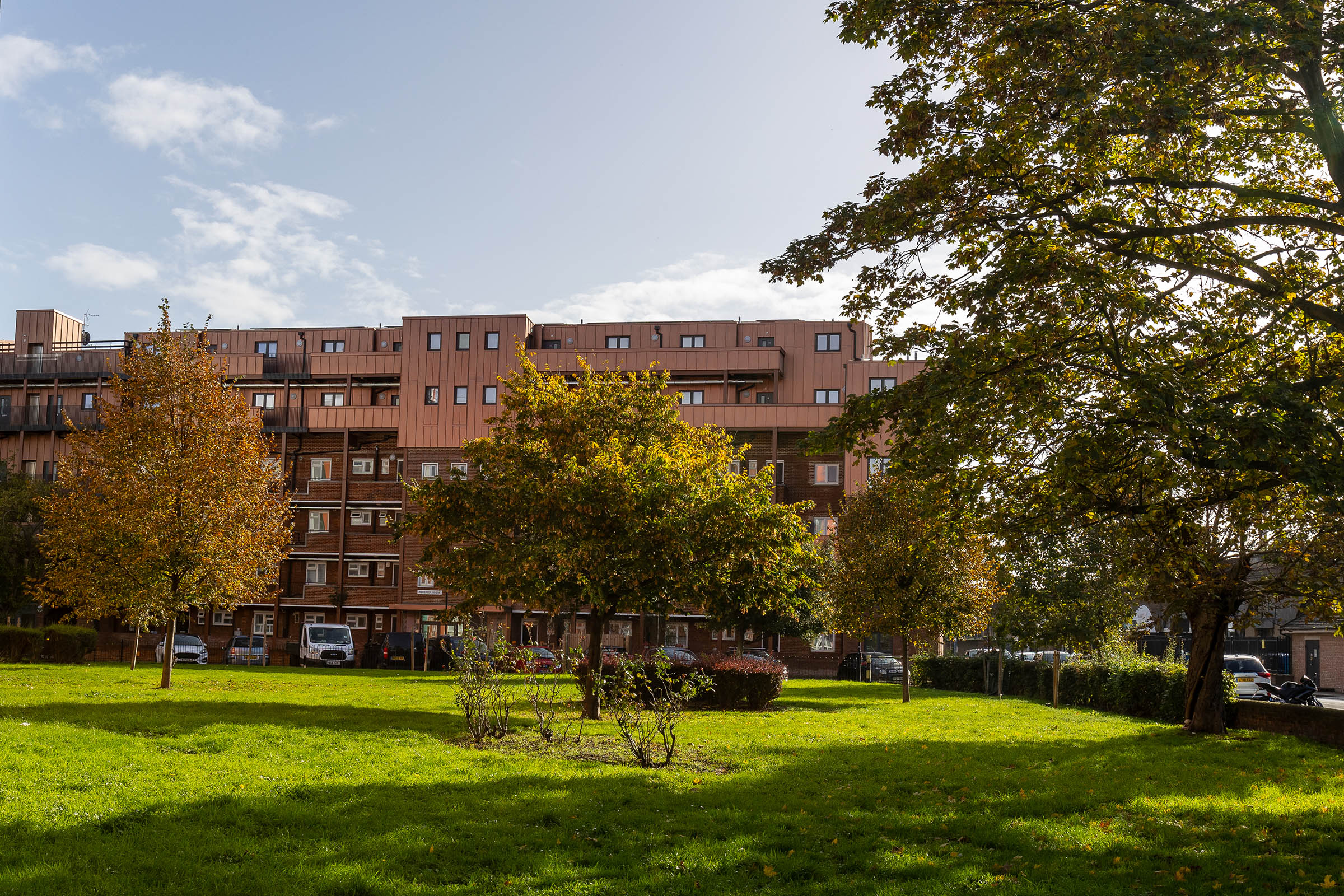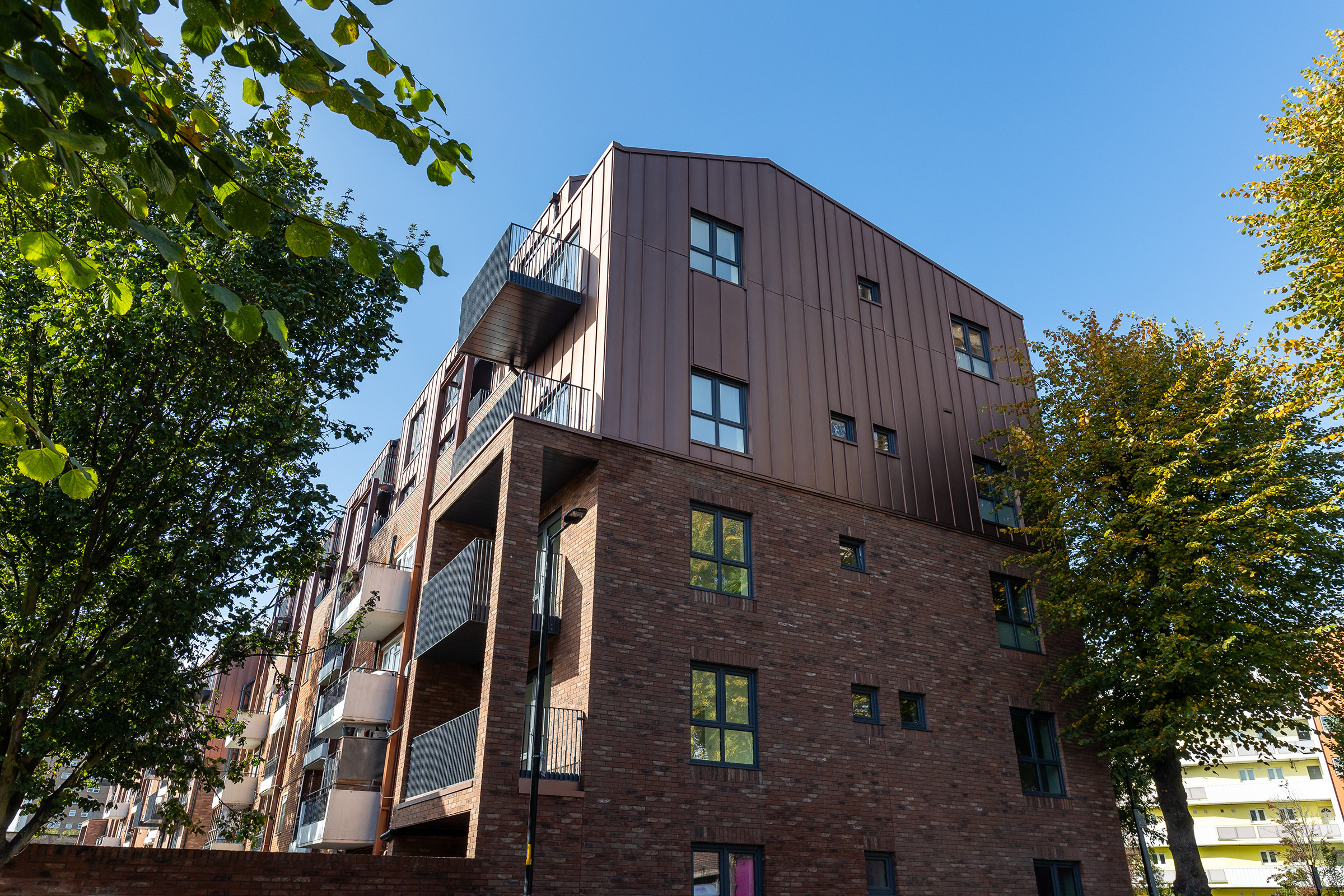14.11.23
Thought piece
The November/December of trade journal, Architects Datafile, features an article by our Associate Director Ayna Azhigali, discussing MMC and how it is one of the major missing piece in the housing crisis and how aesthetics need not be an issue.

We are all acutely aware of the housing crisis that is taking place in the UK, with the number of new homes being built falling short of the Government’s targets and a critical need to ensure that people have access to suitable housing that is safe, warm, and healthy.
As a practice we have over 20 years’ experience designing and delivering a wide range of modular projects, both in the UK and internationally and therefore have first-hand experience of the benefits this brings in delivering new homes at a faster rate with less disruption to the local community.
Examples of success:
Modular Pocket Schemes
With the challenge of three tight urban sites in London on the edge of an existing residential estate and alongside a busy railway line we used our wealth of knowledge and practical experience to design and deliver quality homes for local first-time buyers.
Creating identical modules across the three Pocket Living projects but designed and assembled to create three distinctly different schemes, these new homes completed the original estate and brought an active community feel to a previously neglected area.
The modules were constructed concurrently, with coordinated factory slots, delivery and sequencing using materials to reflect the local vernacular. By doing this we were able to complete the work on site within four weeks, resulting in half less trucks on site, considerable reduction in waste and a six-month reduction in the programme.

Due to the close proximity of residential buildings, using modular construction was particularly beneficial as the construction site had considerably less dust and noise and in addition the whole construction programme was a lot shorter, resulting in less disruption to the neighbouring houses.
One of the interesting aspects of these three projects was that the client and planning authority didn’t want the developments to look like modular construction, but instead look more in line with traditional brick houses.
To make sure that the modular joints were not visible on the facades, we had to apply cladding after the modular was installed. This resulted in the building have a more traditional construction look, with each project having distinctive characteristics, while internally the modules are the same, allowing for speed of construction.

Leverage airspace through modular – Antony and Roderick House, Bermondsey, South-East London
Appointed with Adstone Construction and Apex Airspace for our expertise and vision we completed the design and detailed delivery of an innovative modular rooftop extension and infill development for Lambeth and Southwark Housing Association.
This enhanced scheme, on two existing 1950s residential blocks, created 30 new additional affordable homes by leveraging the airspace while existing residents remained in their homes.
As the existing roof was coming to the end of its life this allowed us to create a bespoke exoskeletal structure which was added to the rooftop to carry the weight of the new modular homes, as part of the rooftop extension, also helping to improve the insulation and weathertightness of existing homes.



